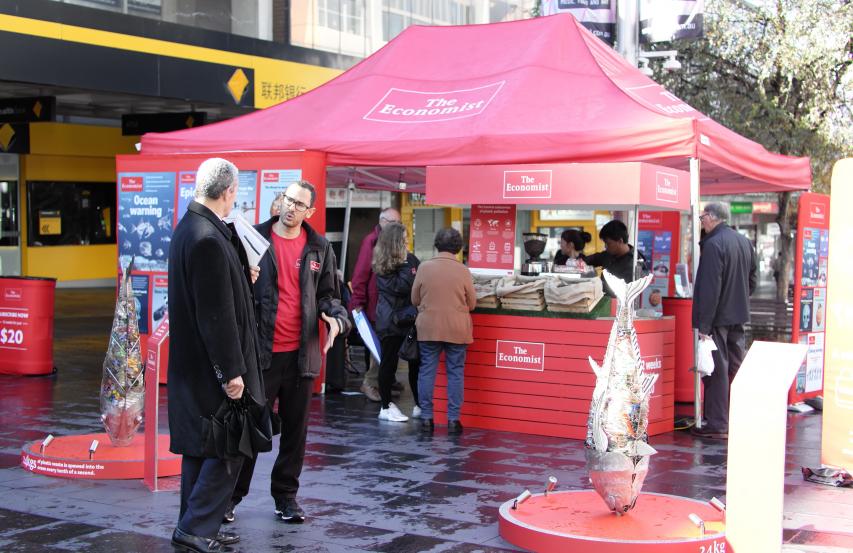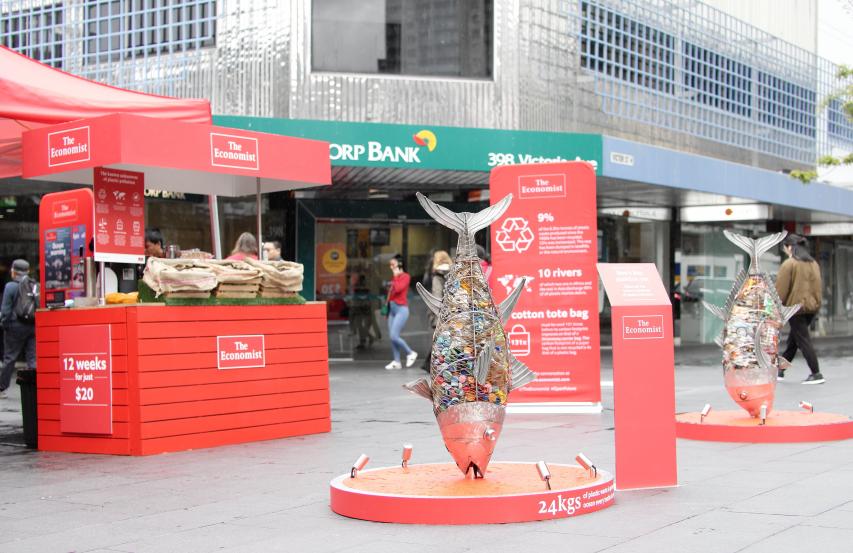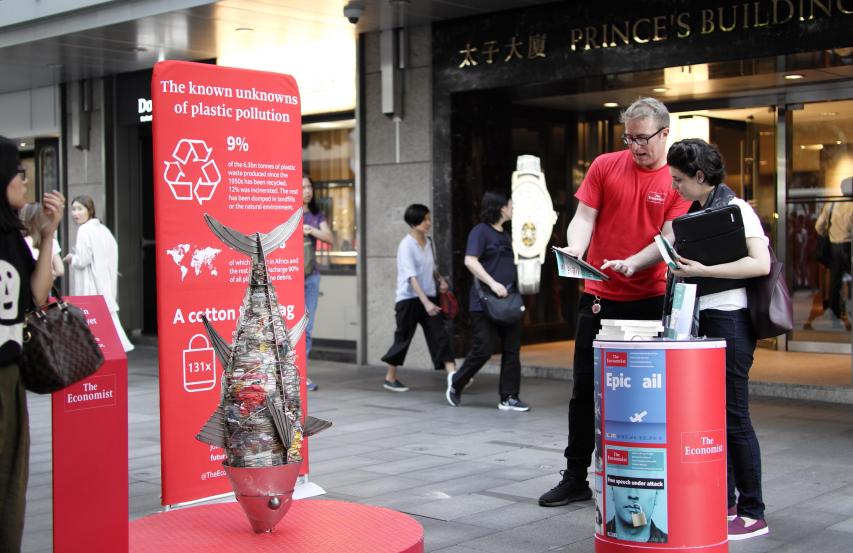





While The Economist is largely based on written content, experiential marketing has been a helpful tactic for the brand to reach more people and gain new subscribers.
With this campaign, they wanted to shake things up, and bring their mind-stretching journalism to life.
Plastic is a topic that has gained much media coverage and has been brought to life in many ways around the globe. However, The Economist’s stance on the subject took a different angle.
We needed to demonstrate The Economist’s authoratitve insight on a a well-trodden subject, making it seem new and engaging.
The plastic problem is top of mind right now. But the focus has largely been on reducing plastic usage. When in fact, The Economist uncovered a few surprising facts on plastics:
- More than 8 billion tonnes of plastic pollution has been produced since the 1950s - enough to wrap the continents in cling wrap four times over. But only 9% of that has been recycled.
- A major worry is that much plastic ends up in the ocean, 10 rivers discharge 90% of all plastic marine debris. 8 of these rivers are in Asia.
We needed to highlight The Economist’s authoritative view that using less plastic is at best a partial solution to ocean health. A better answer is to recycle and improve the recycling processes we have in place.
"Don't bin plastics, yet" brings The Economist’s mind-stretching journalism to life and challenges consumers to consider solutions to the growing plastic problem. An artistic fish installation was crafted using 24 kilograms of recycled ocean plastics, collected from a single beach clean up, and represents the amount of plastic spewed into the ocean every tenth of a second, giving people an idea of how much plastic waste is dumped into the ocean. The program aims to engage with a curious audience and attract new readers to The Economist through creative and provocative real world experiences.



 Case Studies
Case Studies
